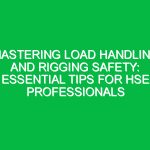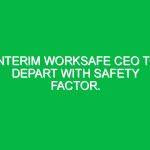Ensuring safety on construction sites is paramount, not just for the workers but also for the public. With the bustling activity, heavy machinery, and potential hazards present, it’s crucial to implement effective safety measures. Among these, construction site signage and barricading play a pivotal role in maintaining a secure environment. This guide delves into the essentials of construction site safety, focusing on the significance of signage and barricading within the Health Safety and Environment (HSE) domain.
Understanding the Importance of Construction Site Safety
Construction sites are inherently dangerous places. The risk of accidents and injuries is high, making safety measures non-negotiable. Effective safety practices not only protect workers but also minimize the risk of legal issues and financial losses. In this context, construction site signage and barricading are not just regulatory requirements but are critical components of an overarching safety strategy.
The Role of Signage in Construction Safety
Signage serves as the silent sentinels of construction site safety. They provide crucial information, warnings, and directions that help prevent accidents and ensure that everyone on site is aware of potential hazards. From indicating restricted areas to highlighting safety equipment locations, signs play a vital role in guiding behavior and promoting safety awareness.
Types of Construction Site Signs
Construction site signs can be broadly categorized into informational, warning, and directional signs. Informational signs provide general information about safety practices, while warning signs alert workers and visitors to potential hazards. Directional signs guide people towards essential areas like exits, first aid stations, and assembly points. Each type of sign is designed to convey a specific message clearly and effectively.
The Significance of Barricading in Construction Safety
Barricading is another crucial aspect of construction site safety. It involves creating physical barriers to control access to hazardous areas, thereby preventing unauthorized entry and reducing the risk of accidents. Barricades can be temporary or permanent and are often used in conjunction with signage to enhance safety measures.
Types of Barricades
Barricades come in various forms, including fences, tapes, cones, and barriers. Each type serves a specific purpose, from demarcating danger zones to controlling pedestrian and vehicular traffic. The choice of barricade depends on the nature of the hazard and the level of protection required.
Best Practices for Construction Site Signage and Barricading
Implementing effective signage and barricading requires careful planning and adherence to best practices. Here are some key considerations to maximize safety on construction sites:
Strategic Placement
Signs and barricades should be placed at strategic locations where they are easily visible and effective in conveying their intended message. This includes entrances, hazard areas, and high-traffic zones. The goal is to ensure that the safety measures are not only present but also impactful.
Regular Maintenance
Safety signage and barricades need to be maintained regularly to ensure their effectiveness. This includes checking for damage, ensuring visibility, and updating information as necessary. Neglected signs and barricades can lead to confusion and accidents, undermining the safety efforts.
Compliance with Regulations
Adhering to local and international safety regulations is crucial. This ensures that the signage and barricading meet the required standards and are effective in preventing accidents. Familiarity with regulations such as OSHA (Occupational Safety and Health Administration) guidelines is essential for compliance.
Training and Awareness
Workers and visitors should be trained on the significance of construction site signage and barricading. This includes understanding the meanings of different signs and the importance of respecting barricades. Awareness programs can significantly enhance the effectiveness of safety measures.
Emerging Trends in Construction Site Safety
The field of construction safety is constantly evolving, with new technologies and practices enhancing traditional methods. Digital signage, smart barricades, and augmented reality (AR) are some of the innovations making construction sites safer. These technologies offer dynamic and interactive ways to communicate safety information, further reducing the risk of accidents.
Conclusion: A Safer Future with Effective Signage and Barricading
Construction site safety is a multifaceted challenge that requires a comprehensive approach. Signage and barricading are fundamental elements of this approach, serving as essential tools in preventing accidents and protecting lives. By adhering to best practices and embracing emerging technologies, the construction industry can continue to improve safety standards and create a safer working environment for everyone involved.
In summary, the key points to remember for maximizing safety through construction site signage and barricading include understanding their importance, implementing strategic placement, ensuring regular maintenance, complying with regulations, and fostering training and awareness. Together, these measures form the cornerstone of effective construction site safety, paving the way for a safer and more secure future.


